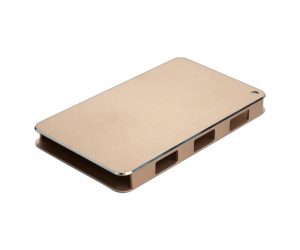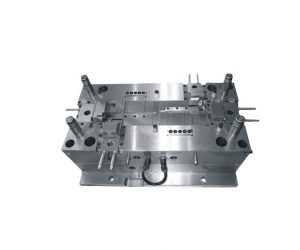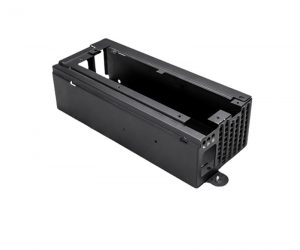1. Introduction: The Dawn of Accelerated Innovation
In an era where product cycles shrink and consumer demands for customization surge, rapid 3D prototyping has emerged as a transformative force in modern manufacturing. Unlike traditional prototyping methods, which often require weeks of tooling and manual labor, 3D prototyping leverages additive manufacturing (AM) to translate digital designs into physical models in hours or days. This technology not only accelerates time-to-market but also unlocks unprecedented design freedom, enabling engineers to iterate faster, validate concepts earlier, and reduce costly errors. This article explores how rapid 3D prototyping revolutionizes product development across industries, dissecting core technologies, strategic advantages, and real-world applications that demonstrate its game-changing potential.
Consider the automotive industry as an example. In the past, developing a new car prototype could take months. Engineers had to create molds, cast parts, and assemble them, a process that involved significant time and cost. With rapid 3D prototyping, a company like Tesla can now create a functional prototype of a new car component in a matter of days. This allows them to test and refine the design much earlier in the development cycle, potentially saving millions of dollars in rework and speeding up the release of new models.
2. Core Technologies: The Engine of Rapid Prototyping
2.1 Key 3D Printing Methods for Prototyping
At the heart of rapid 3D prototyping lie several additive manufacturing technologies, each with its own unique set of advantages, making them suitable for different applications. These technologies have revolutionized the way prototypes are created, offering flexibility, speed, and precision that were previously unattainable.
Yigu Technology Stereolithography (SLA) stands out for its ability to produce high - detail models. It operates on the principle of using a laser to cure liquid resin layer by layer. The laser traces the cross - section of the model onto the surface of the liquid resin, which then solidifies. This process is repeated for each layer until the entire 3D object is formed. With a precision range of ±0.05–0.1 mm and the ability to achieve build speeds of 10–50 mm/h, SLA is ideal for applications such as creating intricate jewelry prototypes, where every minute detail matters, or for manufacturing medical devices that require a high level of accuracy and smooth surfaces. Photopolymer resins are the primary materials used in SLA, and they come in a variety of formulations to meet different mechanical and optical requirements.
Fused Deposition Modeling (FDM) is another widely used technology, especially for creating functional prototypes. It involves melting and extruding thermoplastic filaments, such as PLA, ABS, or nylon, through a nozzle. As the nozzle moves in a predefined pattern, the melted material is deposited layer by layer, cooling and solidifying to form the object. FDM offers relatively fast prototyping speeds, ranging from 20–100 mm/h, and a precision of ±0.1–0.5 mm. Its popularity is due in part to the wide availability and low cost of the materials, as well as its simplicity in operation. This makes it a great choice for rapid iterations during the design phase, allowing engineers to quickly test different design concepts without breaking the bank. For example, in the development of a new consumer electronics product, an FDM - printed prototype can be used to test the form factor, ergonomics, and basic functionality of the device.
Selective Laser Sintering (SLS) uses a laser to sinter powdered polymers, such as nylon or polycarbonate. The laser selectively fuses the powder particles together, layer by layer, to create the 3D object. SLS is known for its ability to produce durable and complex geometries. Since it doesn't require support structures for overhanging parts (as the unsintered powder supports the object during the build process), it can create parts with internal cavities and complex shapes that would be difficult to achieve with other methods. With build speeds of 15–60 mm/h and a precision range of ±0.1–0.3 mm, SLS is well - suited for applications in the automotive and aerospace industries, where parts need to be strong and lightweight.
PolyJet is a unique technology that jets liquid photopolymers to create multi - material builds. It can combine different types of resins in a single print, allowing for the creation of objects with varying properties, such as rubber - like flexibility in some areas and rigid strength in others. This makes it perfect for creating aesthetic models, where color accuracy and the ability to mimic different textures are crucial. For instance, in the toy industry, PolyJet can be used to create prototypes with realistic colors and soft, touch - friendly surfaces. With a high precision of ±0.02–0.05 mm and build speeds of 10–30 mm/h, PolyJet offers a balance between detail and speed for applications that demand both.
The following Yigu Technology table summarizes the key characteristics of these 3D printing methods for prototyping:
| Technology | Principle | Materials Used | Prototyping Speed | Precision Range | Ideal for |
| Stereolithography (SLA) | Laser - cured liquid resin layer by layer | Photopolymer resins | 10–50 mm/h | ±0.05–0.1 mm | High - detail models, medical devices |
| Fused Deposition Modeling (FDM) | Melting and extruding thermoplastic filaments | PLA, ABS, nylon | 20–100 mm/h | ±0.1–0.5 mm | Functional prototypes, rapid iterations |
| Selective Laser Sintering (SLS) | Laser - sintering powdered polymers | Nylon, polycarbonate | 15–60 mm/h | ±0.1–0.3 mm | Durable, complex geometries |
| PolyJet | Jetting liquid photopolymers for multi - material builds | Rubber - like, transparent resins | 10–30 mm/h | ±0.02–0.05 mm | Aesthetic models, color accuracy |
2.2 Material Versatility: From Plastics to Metals
One of the most remarkable aspects of rapid 3D prototyping is the wide range of materials that can be used, each with its own set of properties and applications. This material versatility allows for the creation of prototypes that closely mimic the final product in terms of functionality, appearance, and performance.
Polymers are the most commonly used materials in 3D prototyping, primarily due to their low cost and ease of use. PLA (polylactic acid) is a popular choice, especially for hobbyists and those focused on environmental sustainability. It is biodegradable, making it an eco - friendly option. However, PLA is relatively brittle, which limits its use in applications that require high impact resistance. On the other hand, ABS (acrylonitrile butadiene styrene) is a more robust polymer. It offers higher impact strength, making it suitable for functional testing. For Yigu Technology example, when prototyping a smartphone case, an ABS - printed prototype can better withstand the everyday wear and tear that a real - world case would experience, providing more accurate feedback on its durability.
Resins play a crucial role in SLA and PolyJet 3D printing. These UV - curable resins are formulated to have excellent flow properties, allowing for precise deposition and curing. They can achieve extremely smooth surfaces, with a roughness average (Ra) of ≤1.6 μm. This makes them indispensable for applications where surface finish is critical, such as in the production of consumer electronics. For example, the outer casing of a high - end earbud or a smartwatch can be accurately prototyped using resin - based 3D printing to ensure a sleek and polished appearance. Additionally, resins can be formulated to have specific optical properties, such as transparency, which is useful for creating lenses or light - diffusing components.
In recent years, there has been a growing trend towards using metals and composites in 3D prototyping, especially in industries like aerospace and automotive. Technologies like Direct Metal Laser Sintering (DMLS) enable the use of metal powders, such as aluminum, titanium, and stainless steel, to create high - strength prototypes. These metals offer superior mechanical properties, including high strength - to - weight ratios, making them ideal for applications where parts need to withstand extreme conditions. For example, in the aerospace industry, 3D - printed titanium components can be used to prototype aircraft engine parts. These prototypes can then be tested for performance and durability in simulated flight conditions. However, it's important to note that prototyping with metals is still more expensive than using polymers. The cost of the metal powders, as well as the more complex equipment and processing requirements, make the overall cost of metal prototyping 2 - 5 times higher than that of polymer - based prototyping.
Composites, which combine two or more materials to achieve unique properties, are also emerging as a viable option for 3D prototyping. For instance, carbon fiber - reinforced polymers can be used to create prototypes that are both lightweight and extremely strong. These composites are finding applications in the automotive and sports industries, where high - performance components are required. The ability to customize the material composition and structure of composites through 3D printing opens up new possibilities for designing innovative products.
4. Industry Applications: Where Rapid Prototyping Drives Impact
4.1 Automotive: Accelerating EV Innovation
The automotive industry is in the midst of a revolutionary shift towards electric vehicles (EVs), and rapid 3D prototyping is playing a pivotal role in this transformation. One of the key challenges in EV development is creating components that are both lightweight for better energy efficiency and durable enough to withstand the rigors of daily use.
Take, for Yigu Technology example, Tesla's development of a new electric vehicle. The company faced the challenge of validating a lightweight motor housing design. This was no easy feat, as the design needed to meet strict thermal and structural performance requirements. Traditional prototyping methods would have taken months, involving the creation of expensive molds and multiple rounds of physical testing. However, Tesla turned to Fused Deposition Modeling (FDM) with a nylon - carbon fiber composite.
Using this 3D printing technology, Tesla was able to print functional prototypes of the motor housing in just 72 hours. This rapid turnaround allowed the engineering team to conduct comprehensive tests on heat dissipation and mechanical stress much earlier in the development cycle. The results were remarkable. Heat dissipation was improved, with hotspots reduced by 25%. The printed prototypes also withstood 50% higher load than initially predicted, demonstrating the robustness of the design.
The impact of this rapid prototyping approach was significant. By shortening the development cycle by 3 months, Tesla was able to place early tooling orders, streamlining the production process. This not only saved time but also led to a 15% cost reduction in the final part. The ability to quickly iterate on the design and test its performance meant that Tesla could bring its new EV to market faster, gaining a competitive edge in the rapidly evolving automotive landscape.
Another example is the development of battery enclosures. With the need for high - energy - density batteries in EVs, battery enclosures must be designed to protect the battery cells from external forces and thermal runaway. 3D prototyping allows automotive manufacturers to create complex, lightweight enclosures with integrated cooling channels. These prototypes can be tested for fit, form, and function, ensuring that the final product meets the strict safety and performance standards of the automotive industry. In fact, a recent study by a leading automotive research firm found that companies that use 3D prototyping for battery enclosure development can reduce the overall development time by 40% compared to traditional methods.
4.2 Medical Devices: Customization at Scale
In the medical field, the demand for personalized solutions is on the rise, and rapid 3D prototyping is making it possible to achieve customization at scale.
Patient - specific implants are a prime example of how 3D prototyping is revolutionizing healthcare. Companies like Stratasys are using PolyJet technology to create biocompatible resin models for dental aligners. Traditional methods of creating dental aligners involved making physical impressions of the patient's teeth, which were then used to create molds. This process was not only time - consuming but also prone to errors. With 3D printing, digital scans of the patient's teeth are used to design custom - fit aligners. The PolyJet technology allows for the creation of highly accurate models with a smooth finish. The result? Fitting errors are reduced by 90% compared to traditional molds. This not only improves the patient experience but also speeds up the orthodontic treatment process.
Surgical planning is another area where 3D prototyping is having a profound impact. A hospital in Germany used Stereolithography (SLA) to print 3D models of complex tumors. These models provided surgeons with a tangible representation of the tumors, allowing them to practice surgical procedures in advance. In cranial surgeries, where precision is crucial, the use of 3D - printed models reduced operating time by 20%. Surgeons could study the anatomical structure of the tumor, plan the best approach for removal, and anticipate any potential challenges. This led to more successful surgeries and better patient outcomes.
Yigu Technology 3D prototyping is also being used to develop custom prosthetics. For amputees, a well - fitting prosthetic can significantly improve their quality of life. 3D scanning technology is used to create a detailed model of the patient's residual limb, and 3D printing is then used to produce a prosthetic socket that fits perfectly. This personalized approach ensures maximum comfort and functionality for the user. In addition, the use of 3D printing allows for the creation of prosthetics with unique features, such as built - in sensors for improved mobility or aesthetic designs that match the patient's preferences.
4.3 Consumer Goods: Design - Driven Innovation
The consumer goods industry thrives on innovation, and rapid 3D prototyping is enabling companies to bring new and improved products to market faster.
Aesthetic prototyping is a crucial aspect of product development in the consumer goods sector. Consider a toy manufacturer that wanted to introduce a new action figure. Using PolyJet technology, the manufacturer was able to produce full - color, multi - texture prototypes. These prototypes were not only visually appealing but also accurately represented the final product in terms of color, texture, and detail. By presenting photorealistic samples to retailers, the approval process was accelerated by 50%. Retailers could see exactly what the product would look like on the shelves, making it easier for them to make purchasing decisions. This not only saved time but also increased the chances of the product being stocked in stores.
Ergonomic testing is another area where 3D prototyping is making a difference. A laptop brand was developing a new keyboard design and wanted to optimize typing comfort. Using 3D printing, the company printed multiple models of the keyboard with varying key slopes. These models were then tested with a group of users, who provided feedback on the typing experience. Based on this feedback, the company was able to fine - tune the design before finalizing the mold. This iterative process, made possible by 3D prototyping, ensured that the final product met the needs and expectations of consumers.
In the fashion industry, 3D prototyping is being used to create custom - fit clothing. Body scanning technology is combined with 3D printing to produce garments that fit the individual's body shape perfectly. This not only reduces the need for alterations but also allows for the creation of unique, one - of - a - kind designs. For example, a high - end fashion brand might use 3D prototyping to create a limited - edition collection of dresses that are tailored to the specific measurements of its customers.
In the food industry, 3D prototyping is being explored as a way to create customized food products. From personalized chocolates with unique shapes and flavors to 3D - printed meal replacements, the possibilities are endless. A food tech startup might use 3D printing to create snacks with specific nutritional profiles, tailored to the dietary needs of athletes or individuals with food allergies.
5. Conclusion: Embracing the Prototyping Revolution
Yigu Technology Rapid 3D prototyping is not just a tool—it’s a paradigm shift in how we innovate. By merging speed, design freedom, and cost efficiency, it empowers engineers to transform ideas into reality with unprecedented agility. Whether refining a medical implant for perfect fit, testing an aerodynamic car part, or iterating a consumer gadget for optimal user experience, the technology bridges the gap between concept and production like never before. As materials science, automation, and AI continue to advance, the only limit to what rapid prototyping can achieve is the boundary of human imagination.
FAQs
1. What is the fastest 3D printing method for prototyping?
Fused Deposition Modeling (FDM) generally offers relatively fast prototyping speeds, with build speeds ranging from 20 - 100 mm/h. However, the actual speed can also depend on the complexity of the model and the specific printer settings. For simple, low - detail prototypes, FDM can produce results quite quickly. But for high - detail work, Stereolithography (SLA) might be a better choice despite its slightly slower build speed of 10 - 50 mm/h, as it can achieve a higher level of precision which may be more important in some cases.
2. Can I use 3D prototyping for large - scale production?
While 3D prototyping is excellent for small - batch production and rapid iteration during the development phase, large - scale production with current 3D printing technology can be challenging. The cost per unit for 3D printing, especially for materials like metals, is still relatively high compared to traditional mass - production methods such as injection molding. Additionally, the speed of 3D printing may not be sufficient for high - volume production. However, as the technology continues to evolve, some applications, especially those with complex geometries or high customization requirements, may see an increase in 3D - printed large - scale production in the future.
3. How accurate are 3D - printed prototypes?
Accuracy varies depending on the 3D printing technology used. Stereolithography (SLA) can achieve a precision range of ±0.05–0.1 mm, making it very accurate for high - detail work. PolyJet has a high precision of ±0.02–0.05 mm, ideal for applications where color accuracy and fine details are crucial. Fused Deposition Modeling (FDM) has a precision of ±0.1–0.5 mm, which is suitable for functional prototypes and rapid iterations but may not be as accurate as SLA or PolyJet for highly detailed parts. Selective Laser Sintering (SLS) offers a precision range of ±0.1–0.3 mm, providing a good balance between accuracy and the ability to create durable, complex geometries.





